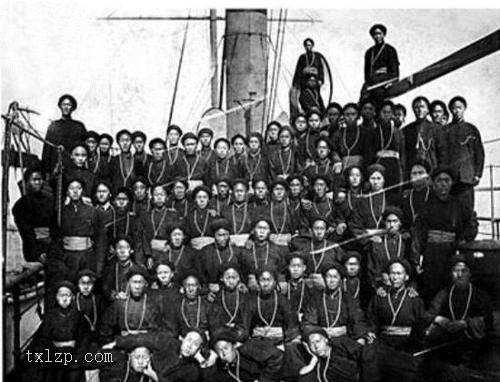Period:Eastern Zhou dynasty Production date:4thC BC (circa)
Materials:wood (litsee)
Technique:pigmented, dry lacquer,
Subjects:guardian
Dimensions:Height: 76.20 centimetres Width: 48.50 centimetres Depth: 30 centimetres
Description:
Red pigmented-wooden guardian figure with a long protruding tongue and crowned by antlers made of dry lacquer.
IMG
![图片[1]-figure BM-1950-1115.1-China Archive](https://chinaarchive.net/Eastern Zhou dynasty/43/mid_00360395_001.jpg)
![图片[2]-figure BM-1950-1115.1-China Archive](https://chinaarchive.net/Eastern Zhou dynasty/43/mid_00033903_001.jpg)
![图片[3]-figure BM-1950-1115.1-China Archive](https://chinaarchive.net/Eastern Zhou dynasty/43/mid_00171591_001.jpg)
![图片[4]-figure BM-1950-1115.1-China Archive](https://chinaarchive.net/Eastern Zhou dynasty/43/mid_00507152_001.jpg)
![图片[5]-figure BM-1950-1115.1-China Archive](https://chinaarchive.net/Eastern Zhou dynasty/43/mid_00986217_001.jpg)
![图片[6]-figure BM-1950-1115.1-China Archive](https://chinaarchive.net/Eastern Zhou dynasty/43/mid_01016108_001.jpg)
![图片[7]-figure BM-1950-1115.1-China Archive](https://chinaarchive.net/Eastern Zhou dynasty/43/mid_1950_1115_1BT2.jpg)
Comments:Rawson 1992:The southern state of Chu, which dominated the area of the great lakes north of the Yangzi river, is renowned for its complex views of the spirit world recorded in the later, Han period, text, the ‘Shanhaijing’ (‘Classic of the mountains and seas’). Wooden figures with monstrous faces, long tongues and antlers were placed as guardians in Chu tombs in southern Henan and northern Hubei provinces. This tradition of sculpture also embraced more realistic creatures, such as cranes and deer. It seems likely that this southern area, which had employed figures of animals for its bronze vessels, retained a deep-seated interest in representing form in three dimensions. In this heavily forested area the abundance of wood made wooden sculpture possible. We do not know whether other areas produced such carvings, as little has survived, but it does not seem likely in the light of the history of sculpture generally.
Materials:wood (litsee)
Technique:pigmented, dry lacquer,
Subjects:guardian
Dimensions:Height: 76.20 centimetres Width: 48.50 centimetres Depth: 30 centimetres
Description:
Red pigmented-wooden guardian figure with a long protruding tongue and crowned by antlers made of dry lacquer.
IMG
![图片[1]-figure BM-1950-1115.1-China Archive](https://chinaarchive.net/Eastern Zhou dynasty/43/mid_00360395_001.jpg)
![图片[2]-figure BM-1950-1115.1-China Archive](https://chinaarchive.net/Eastern Zhou dynasty/43/mid_00033903_001.jpg)
![图片[3]-figure BM-1950-1115.1-China Archive](https://chinaarchive.net/Eastern Zhou dynasty/43/mid_00171591_001.jpg)
![图片[4]-figure BM-1950-1115.1-China Archive](https://chinaarchive.net/Eastern Zhou dynasty/43/mid_00507152_001.jpg)
![图片[5]-figure BM-1950-1115.1-China Archive](https://chinaarchive.net/Eastern Zhou dynasty/43/mid_00986217_001.jpg)
![图片[6]-figure BM-1950-1115.1-China Archive](https://chinaarchive.net/Eastern Zhou dynasty/43/mid_01016108_001.jpg)
![图片[7]-figure BM-1950-1115.1-China Archive](https://chinaarchive.net/Eastern Zhou dynasty/43/mid_1950_1115_1BT2.jpg)
Comments:Rawson 1992:The southern state of Chu, which dominated the area of the great lakes north of the Yangzi river, is renowned for its complex views of the spirit world recorded in the later, Han period, text, the ‘Shanhaijing’ (‘Classic of the mountains and seas’). Wooden figures with monstrous faces, long tongues and antlers were placed as guardians in Chu tombs in southern Henan and northern Hubei provinces. This tradition of sculpture also embraced more realistic creatures, such as cranes and deer. It seems likely that this southern area, which had employed figures of animals for its bronze vessels, retained a deep-seated interest in representing form in three dimensions. In this heavily forested area the abundance of wood made wooden sculpture possible. We do not know whether other areas produced such carvings, as little has survived, but it does not seem likely in the light of the history of sculpture generally.
© Copyright
The copyright of the article belongs to the author, please keep the original link for reprinting.
THE END



![[Qing Dynasty] British female painter—Elizabeth Keith, using woodblock prints to record China from the late Qing Dynasty to the early Republic of China—1915-China Archive](https://chinaarchive.net/wp-content/uploads/2022/11/image-191x300.png)

